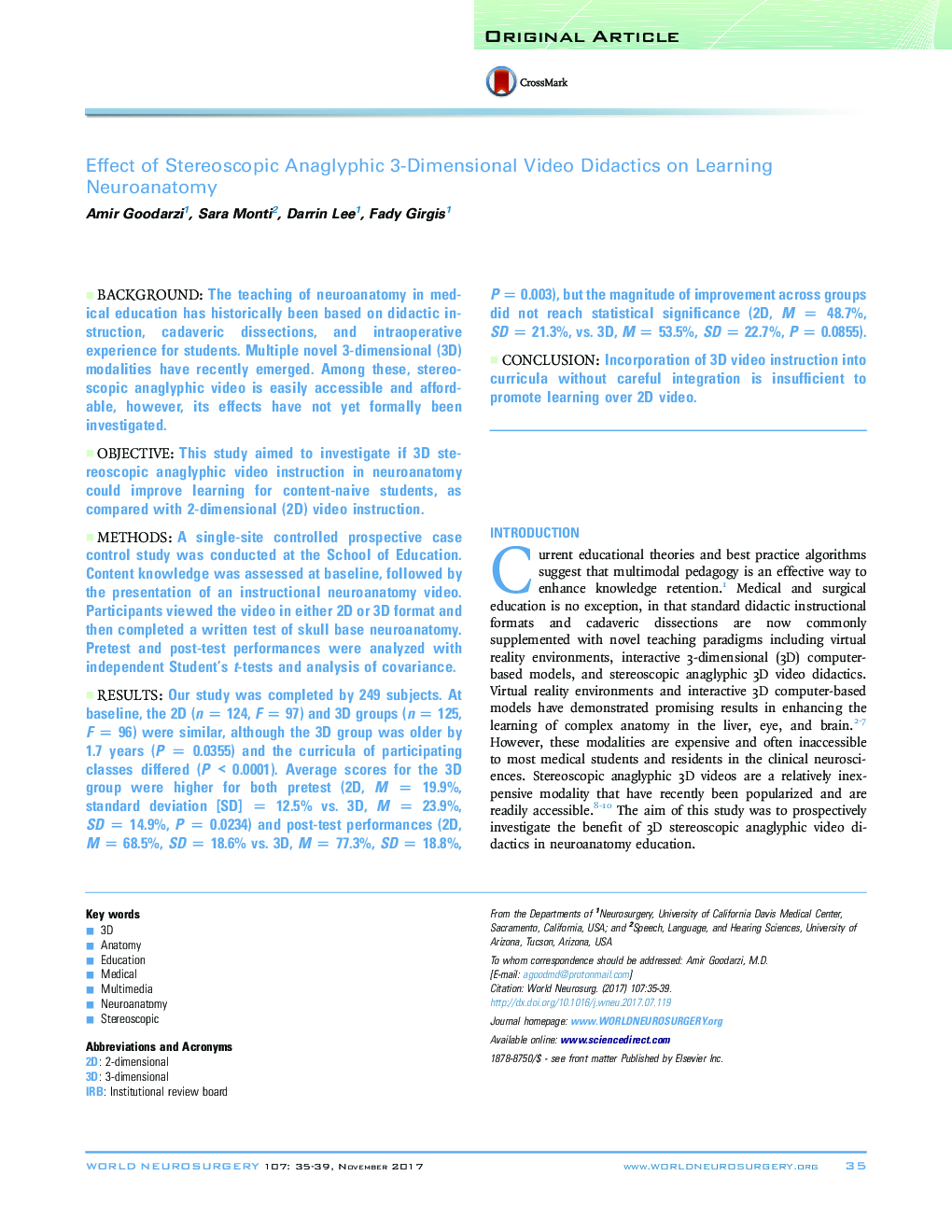| کد مقاله | کد نشریه | سال انتشار | مقاله انگلیسی | نسخه تمام متن |
|---|---|---|---|---|
| 5633854 | 1581448 | 2017 | 5 صفحه PDF | دانلود رایگان |

BackgroundThe teaching of neuroanatomy in medical education has historically been based on didactic instruction, cadaveric dissections, and intraoperative experience for students. Multiple novel 3-dimensional (3D) modalities have recently emerged. Among these, stereoscopic anaglyphic video is easily accessible and affordable, however, its effects have not yet formally been investigated.ObjectiveThis study aimed to investigate if 3D stereoscopic anaglyphic video instruction in neuroanatomy could improve learning for content-naive students, as compared with 2-dimensional (2D) video instruction.MethodsA single-site controlled prospective case control study was conducted at the School of Education. Content knowledge was assessed at baseline, followed by the presentation of an instructional neuroanatomy video. Participants viewed the video in either 2D or 3D format and then completed a written test of skull base neuroanatomy. Pretest and post-test performances were analyzed with independent Student's t-tests and analysis of covariance.ResultsOur study was completed by 249 subjects. At baseline, the 2D (n = 124, F = 97) and 3D groups (n = 125, F = 96) were similar, although the 3D group was older by 1.7 years (P = 0.0355) and the curricula of participating classes differed (P < 0.0001). Average scores for the 3D group were higher for both pretest (2D, M = 19.9%, standard deviation [SD] = 12.5% vs. 3D, M = 23.9%, SD = 14.9%, P = 0.0234) and post-test performances (2D, M = 68.5%, SD = 18.6% vs. 3D, M = 77.3%, SD = 18.8%, P = 0.003), but the magnitude of improvement across groups did not reach statistical significance (2D, M = 48.7%, SD = 21.3%, vs. 3D, M = 53.5%, SD = 22.7%, P = 0.0855).ConclusionIncorporation of 3D video instruction into curricula without careful integration is insufficient to promote learning over 2D video.
Journal: World Neurosurgery - Volume 107, November 2017, Pages 35-39